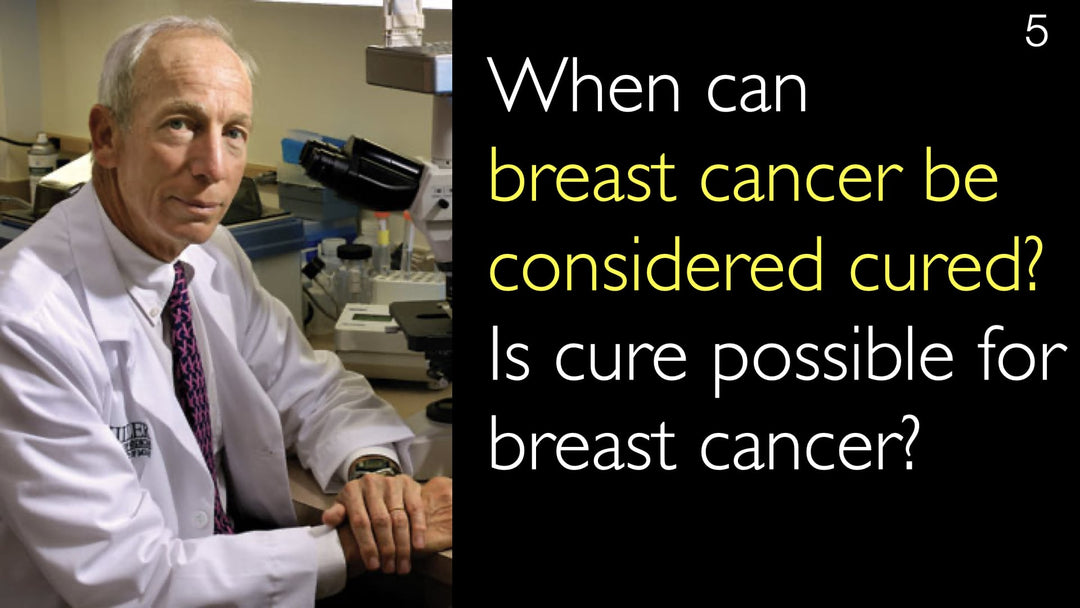O principal especialista em urologia e câncer de próstata, Dr. Mark Emberton, explica como os métodos diagnósticos modernos, especialmente a ressonância magnética (RM), estão revolucionando o tratamento da doença ao viabilizar diagnósticos mais precisos e abrangentes. A transição de biópsias cegas para procedimentos guiados por imagem ajuda a evitar sobrediagnóstico e sobretratamento, abrindo caminho para terapias minimamente invasivas que preservam a função urinária e sexual dos pacientes.
Diagnóstico de Precisão no Câncer de Próstata: Evitando o Tratamento Excessivo com Ressonância Magnética
Ir Para a Seção
- Revolução no Diagnóstico do Câncer de Próstata
- Lições de Outros Cânceres
- O Problema das Biópsias Cegas
- Consequências do Sobrediagnóstico
- Precisão Guiada por Ressonância Magnética
- Benefícios da Terapia Direcionada
- Futuro do Tratamento do Câncer de Próstata
Revolução no Diagnóstico do Câncer de Próstata
O diagnóstico do câncer de próstata está passando por uma transformação fundamental. O Dr. Mark Emberton descreve essa mudança como uma revolução impulsionada pela medicina de precisão. O objetivo é substituir a abordagem padronizada por uma estratégia altamente individualizada para cada paciente.
Esse novo paradigma prioriza um diagnóstico correto, preciso e completo antes da definição de qualquer plano de tratamento.
Lições de Outros Cânceres
A evolução do diagnóstico do câncer de próstata reflete avanços observados em outras áreas da oncologia. O Dr. Mark Emberton destaca o exemplo do câncer renal. Antes, o diagnóstico dependia da palpação de um nódulo ou da presença de sangue na urina.
O surgimento da ultrassonografia e da tomografia computadorizada permitiu a detecção precoce e uma caracterização mais detalhada dos tumores. Essa precisão de imagem viabilizou a cirurgia "poupadora de néfrons", que remove apenas o câncer e preserva o tecido renal, ajudando os pacientes a evitar insuficiência renal e a viver mais.
O Problema das Biópsias Cegas
Por décadas, o método padrão para diagnosticar o câncer de próstata foi a biópsia cega. O Dr. Mark Emberton explica que os urologistas inseriam agulhas na glândula prostática sem conhecer a localização exata de um possível câncer.
Essa técnica era fundamentalmente imprecisa. Seu principal objetivo era apenas confirmar a presença ou ausência de câncer, e não mapear seu tamanho e localização exatos dentro da próstata.
Consequências do Sobrediagnóstico
A imprecisão das biópsias cegas levou diretamente a um significativo sobrediagnóstico e tratamento excessivo. O Dr. Mark Emberton observa que o câncer de próstata se tornou o maior vilão nesse aspecto. Muitos homens foram diagnosticados com doença de muito baixo risco, que nunca ameaçaria suas vidas.
Apesar disso, frequentemente eram submetidos a tratamentos radicais, como a prostatectomia total (remoção completa da glândula). Isso significou que muitas pessoas foram tratadas para câncer de próstata, enquanto poucas realmente se beneficiaram da terapia, expondo-as desnecessariamente a efeitos colaterais graves.
Precisão Guiada por Ressonância Magnética
O advento da ressonância magnética (RM) tem sido a mudança crucial. O Dr. Mark Emberton enfatiza que a RM utiliza sequências especiais para identificar a localização exata do câncer dentro da glândula prostática. Essa tecnologia não envolve radiação e fornece um mapa detalhado para os urologistas.
Em vez de uma amostragem cega, os médicos agora podem guiar a agulha de biópsia diretamente até o tumor. Isso torna o diagnóstico muito mais significativo e preciso, formando a base para todas as decisões de tratamento subsequentes.
Benefícios da Terapia Direcionada
Um diagnóstico preciso abre portas para opções de tratamento direcionadas e minimamente invasivas. Como explica o Dr. Mark Emberton, saber exatamente onde o câncer está permite tratá-lo de forma ideal. Os cirurgiões podem adaptar a abordagem dependendo de o câncer estar no lado esquerdo ou direito.
Os radio-oncologistas podem administrar mais radiação no tumor e menos no tecido saudável. Há até a possibilidade de tratar apenas o câncer em si, preservando toda a glândula prostática.
Futuro do Tratamento do Câncer de Próstata
O benefício final dessa abordagem de precisão é uma melhora dramática na qualidade de vida do paciente. O Dr. Mark Emberton conclui que, ao preservar a glândula prostática, os pacientes podem manter a continência urinária e a função erétil.
Esses são dois problemas muito comuns associados a tratamentos que envolvem a glândula inteira, como prostatectomia ou radioterapia. Essa mudança representa um afastamento do tratamento excessivo desnecessário e uma aproximação ao tratamento personalizado e preservador de função.
Transcrição Completa
Dr. Anton Titov: O diagnóstico do câncer de próstata deve ser correto, preciso e completo. É possível haver sobrediagnóstico do câncer de próstata? E tratamento excessivo? Os métodos diagnósticos para o câncer de próstata estão mudando. A medicina de precisão agora alcançou o câncer de próstata.
Câncer de próstata é um termo genérico para tumores com características diferentes. Os testes diagnósticos e a estratégia de tratamento estão em constante evolução e se tornaram complexos. Qual é o caminho para um diagnóstico preciso e completo do câncer de próstata?
Dr. Mark Emberton: Essa é uma pergunta muito interessante. É uma questão que está mudando enquanto falamos. É instrutivo observar outros cânceres e como o diagnóstico oncológico evoluiu.
Por exemplo, o diagnóstico do câncer renal era feito clinicamente pela palpação de um nódulo ou pela visualização de sangue na urina. Foi a ultrassonografia e a tomografia computadorizada do rim que nos permitiram detectar o câncer renal mais cedo. A tomografia computadorizada nos deu uma descrição muito mais detalhada do que estava presente no rim.
Foi a tomografia computadorizada que nos permitiu começar a ver o câncer dentro do rim. Poderíamos planejar a cirurgia de forma a remover apenas o câncer, deixando o máximo de tecido renal preservado. Essa é a cirurgia "poupadora de néfrons".
Essa cirurgia resultou em muitos pacientes vivendo mais devido à prevenção da insuficiência renal. Acho que o exemplo mais discutido de tratamento de medicina de precisão é o câncer de mama.
Há 40 ou 50 anos, toda mulher fazia mastectomia. Mastectomia é a remoção da parte anterior da parede torácica. É uma operação enorme. Mas era a única operação disponível para câncer de mama.
Com a mamografia, pudemos identificar o câncer dentro da mama. Poderíamos decidir se uma operação menor seria suficiente. Ensaios clínicos apoiaram o tratamento minimamente invasivo.
Em muitas mulheres, remover um nódulo de câncer de mama é tão eficaz quanto remover toda a parede torácica anterior, com todos os problemas que isso acarreta.
Dr. Anton Titov: A cirurgia oncológica torna-se minimamente invasiva.
Dr. Mark Emberton: Exato! E no câncer de próstata, o tratamento minimamente invasivo ainda não aconteceu! Temos removido toda a glândula prostática ou irradiado toda a glândula. Nosso alvo tem sido a própria glândula prostática.
É por isso que, nos últimos 50 ou 60 anos, inserimos agulhas na próstata de forma cega. Não sabemos realmente onde o câncer está. Estamos tentando apenas identificar se o paciente tem câncer ou não.
Se o paciente tivesse câncer, removíamos a glândula prostática. Se não tivesse, nós o liberávamos. E tem sido assim há muito tempo.
Isso significou que homens foram diagnosticados erroneamente com câncer de próstata. Deixamos de detectar muitos cânceres. Homens fizeram prostatectomia, remoção da próstata, muitas vezes desnecessariamente.
Eles tinham doença de muito baixo risco que não os teria matado se a próstata tivesse sido deixada em seu lugar. Alguns de vocês já ouviram falar sobre sobrediagnóstico e tratamento excessivo do câncer.
O câncer de próstata foi o maior vilão em termos de sobrediagnóstico. Muitas pessoas foram tratadas para câncer de próstata. Muito poucas se beneficiaram da terapia.
E essa é a revolução. A última revolução está no diagnóstico do câncer de próstata. É realmente o advento da RM, ressonância magnética, que não envolve radiação.
Muitos dos ouvintes e pessoas assistindo a isto já fizeram RM para joelhos, quadris ou até para a cabeça. Mas estamos direcionando a tecnologia de RM para a próstata.
Usamos muitas sequências especiais de RM para nos dizer onde o câncer está dentro da glândula prostática. E uma vez que fazemos a RM, podemos diagnosticar os pacientes com grande precisão.
Podemos colocar a agulha diretamente no câncer de próstata. Isso torna o diagnóstico muito mais significativo. Mas também abre a oportunidade de tratar o paciente de forma individualizada.
Se tudo o que você quer fazer é remover a próstata, todo paciente com carcinoma prostático recebe o mesmo tratamento. Mas se o objetivo é tratar o câncer de forma ideal, você pode operar de forma diferente.
Se o câncer está à esquerda ou à direita, você pode aplicar mais radiação onde o câncer está e menos em outros lugares. Ou pode até tentar tratar apenas o câncer em si e preservar a próstata.
Dessa forma, você pode preservar a continência urinária e a função erétil. Esses são dois problemas muito comuns quando tratamos toda a glândula prostática para câncer.








